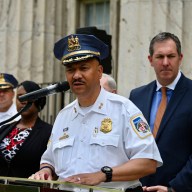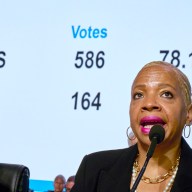Commuting from Clayton Park to downtown Halifax can be a stressful, relaxing or life-threatening experience, depending on your mode of transit.
If your workplace provides parking, or you don’t mind handing over a heap of money, driving is the preferred option for many.
Lindsey Bunin used to take her car downtown, or get her husband to drop her off, but she took a radical step this month: She bought her first bus pass.
“I love commuting because it’s my chance to de-stress in the a.m. with my coffee and book. It’s just as fast as taking the car and you’re leaving the white-knuckled traffic navigating to someone else,” she says.
“That said, the No. 34 is the bus I take and it’s notoriously off-schedule. I can never predict if it’ll come early or late, so I often end up waiting at the stop longer than necessary.”
Mary Wile, councillor for District 10 (Clayton Park West) has long lobbied for a new bus terminal to serve Clayton Park. The current Lacewood Drive-Willet Street terminal is the second-busiest in Halifax, but has only a couple of glass shelters.
Wile hopes the Clayton Park terminal will make the council’s agenda next year. The growing area around Regency Drive also needs a bus route, she says.
“I would hope (the terminal) would be similar to the Mumford Road one, where the buses can drive in and come out,” Wile says. It also needs to have washrooms, as bus passengers must currently borrow the toilets of local facilities. Wile also wants more kneeling buses to accommodate passengers who use wheelchairs.
Douglas Smith bikes into work. Bike lanes are scarce and a mixed blessing, he says, as motorists don’t always stay on their side of the white line.
“Parkland is wide and I have never had a problem on it. Dunbrack and Lacewood are fast, but have two lanes in each direction, so cars have room to pass safely most of the time,” Smith says. The most dangerous part is getting on the peninsula.
“There is no safe way to do it. A person has to ride to the end of the Bedford Highway and have a multilane, fast, heavy traffic fight at the Windsor Street exchange, or merge onto Bayers Road where Highway 102 ends. The speed limit is 50 there, but cars are slowing from 100 and generally are still going 70-90 kilometres per hour. The rotary is the safest way into the core, but it’s out of my way.”
The Mainland North Linear Parkway offers a car-free ride part of the way, but cyclists have to be alert for off-leash dogs.
















